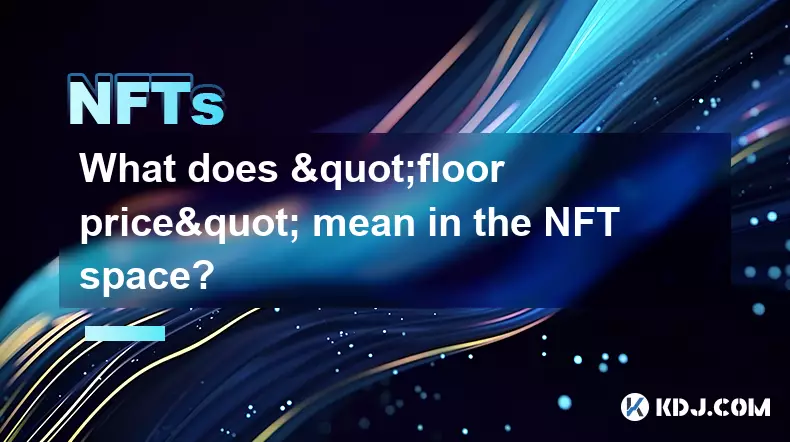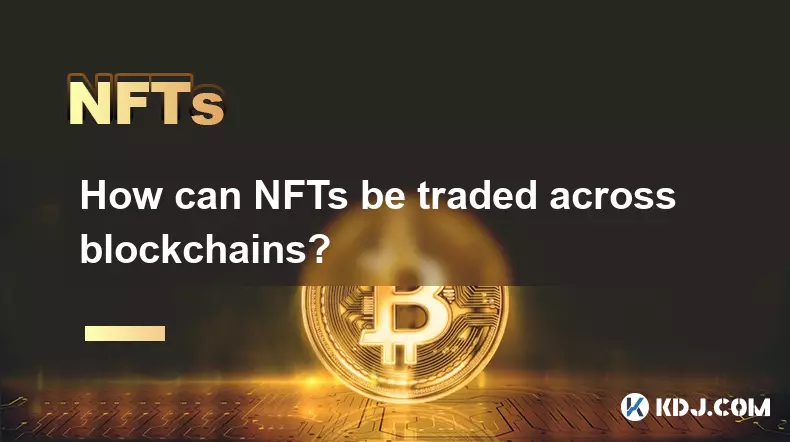-
 bitcoin
bitcoin $109667.069529 USD
-3.03% -
 ethereum
ethereum $3936.685804 USD
-4.07% -
 tether
tether $1.000493 USD
0.01% -
 xrp
xrp $2.771823 USD
-4.74% -
 bnb
bnb $957.805027 USD
-5.34% -
 solana
solana $196.735100 USD
-6.68% -
 usd-coin
usd-coin $0.999727 USD
-0.01% -
 dogecoin
dogecoin $0.227355 USD
-5.12% -
 tron
tron $0.335205 USD
-0.81% -
 cardano
cardano $0.779256 USD
-3.59% -
 ethena-usde
ethena-usde $0.999900 USD
-0.06% -
 hyperliquid
hyperliquid $42.492095 USD
-6.61% -
 chainlink
chainlink $20.501853 USD
-4.34% -
 avalanche
avalanche $28.952606 USD
-11.21% -
 stellar
stellar $0.356038 USD
-3.93%
What does "floor price" mean in the NFT space?
The floor price in an NFT collection reflects the lowest asking price, serving as a key indicator of market sentiment, entry cost, and investment potential.
Sep 22, 2025 at 06:36 am

Floor Price: A Core Metric in the NFT Marketplace
1. The term floor price refers to the lowest current asking price for any item within a specific NFT collection. It acts as a benchmark that reflects the minimum investment required to acquire an asset from that set. This metric is closely monitored by traders, investors, and collectors because it provides immediate insight into the entry-level cost of participation in a given project.
2. Unlike average or median prices, the floor price only considers the cheapest listed NFT, regardless of rarity or attributes. It does not account for sales history or off-market valuations but instead focuses solely on active listings across marketplaces like OpenSea or Blur. As such, it is dynamic and can shift rapidly based on buying pressure, new listings, or coordinated bidding activity.
3. Collections with strong community support and consistent demand tend to maintain or gradually increase their floor prices over time. Sudden drops often signal loss of confidence, market manipulation, or broader downturns in crypto sentiment. Conversely, sharp increases may indicate hype cycles, celebrity endorsements, or upcoming utility reveals tied to the NFTs.
4. Market participants use floor price movements to assess short-term trends and potential flipping opportunities. A rising floor suggests accumulation and confidence, while a stagnant or declining one might deter new buyers. Some investors employ strategies like “floor sweeping,” where they purchase all available low-priced items to artificially inflate value and consolidate control.
Factors Influencing Floor Price Stability
1. Supply and demand dynamics play a central role in determining how stable a floor price remains. Limited supply combined with high interest typically supports upward momentum. When too many holders decide to sell simultaneously—especially during bear markets—the influx of listings exerts downward pressure.
2. Project fundamentals such as roadmap execution, team credibility, and real-world utility directly affect perceived value. NFTs linked to games, exclusive events, or token airdrops often see stronger floor resilience due to tangible benefits beyond speculation.
3. Whales and large stakeholders can manipulate floor prices through strategic buys or dumps. By acquiring multiple floor items, they reduce available supply and force bidders to pay higher prices. On the flip side, sudden mass sell-offs by insiders can trigger panic and accelerate declines.
4. Marketplace fees, gas costs, and platform visibility also influence listing behavior. High transaction expenses may discourage sellers from adjusting prices frequently, leading to artificial stagnation. Meanwhile, featured placements on major platforms can drive traffic and boost bids on lower-tier assets.
The Role of Floor Price in Investment Strategy
1. Many collectors use the floor price as a starting point when evaluating whether a collection is under or overvalued. Comparing it against historical sale data helps identify potential entry windows during dips or exit points during surges.
2. Arbitrage opportunities arise when discrepancies exist between marketplaces. Traders monitor floor differences across platforms and execute cross-exchange purchases to exploit inefficiencies before prices align.
3. Staking protocols and yield-generating NFT platforms often require users to deposit assets valued at or above the current floor. Fluctuations can therefore impact eligibility and reward distribution, making timing crucial for maximizing returns.
4. During bull runs, investors sometimes rotate capital from high-floor blue-chip collections into emerging projects with rapidly ascending floors, seeking amplified gains. This speculative movement fuels volatility but also contributes to broader market liquidity.
Frequently Asked Questions
What causes a sudden drop in an NFT collection’s floor price?A sudden drop often results from mass sell-offs by large holders, negative news about the project, failed roadmap milestones, or general bearish sentiment in the cryptocurrency market. Increased listing volume without corresponding demand accelerates the decline.
Can the floor price be manipulated?Yes, floor price manipulation occurs when individuals or groups buy up all available low-priced items to create scarcity. They may also engage in wash trading—buying and selling among themselves—to simulate activity and inflate perception of value.
Is buying at the floor always a safe strategy?Not necessarily. While purchasing at the floor minimizes initial outlay, it doesn’t guarantee appreciation. Some collections experience prolonged stagnation or continuous decline. Due diligence on project health and community engagement remains essential.
How do rarity traits interact with floor price?High-rarity NFTs usually trade well above the floor. However, if rare items start selling closer to the floor, it may indicate weakening premium for uniqueness. Conversely, strong premiums suggest collectors still prioritize scarcity within the collection.
Disclaimer:info@kdj.com
The information provided is not trading advice. kdj.com does not assume any responsibility for any investments made based on the information provided in this article. Cryptocurrencies are highly volatile and it is highly recommended that you invest with caution after thorough research!
If you believe that the content used on this website infringes your copyright, please contact us immediately (info@kdj.com) and we will delete it promptly.
- Big Rocking Horse, Coin, and Ice Cream: An Aussie Icon's Sweet Ride
- 2025-09-26 10:45:16
- Pi Network, Price Forecast, and the Meme Market: A New York Minute
- 2025-09-26 10:25:14
- AIXA Miner: Revolutionizing Bitcoin Mining with Cloud Solutions
- 2025-09-26 10:45:16
- Mid-Cap Altcoins: Crypto Buys with Breakout Potential
- 2025-09-26 10:50:01
- BullZilla Presale: Riding the Crypto Wave in September 2025
- 2025-09-26 10:50:01
- Litecoin ETF Buzz, XRP Breakout Dreams, and BlockDAG's Deployment: Crypto's Wild West in '25
- 2025-09-26 10:50:01
Related knowledge

How can I determine the authenticity of an NFT project?
Sep 23,2025 at 05:18pm
Understanding the Project Team and Their Background1. Research the identities of the team members behind the NFT project. Verified social media profil...

What's the difference between NFTs and traditional collectibles?
Sep 19,2025 at 12:55pm
Digital Ownership and Provenance1. NFTs are built on blockchain technology, which ensures transparent and immutable records of ownership. Every transa...

How can NFTs be traded across blockchains?
Sep 19,2025 at 12:00pm
Understanding Cross-Chain NFT Trading1. Non-fungible tokens (NFTs) are digital assets that represent ownership of unique items on a blockchain. Origin...

How is NFT rarity calculated?
Sep 18,2025 at 07:54pm
Understanding NFT Rarity Metrics1. NFT rarity is determined by analyzing the uniqueness of individual traits within a collection. Each NFT typically c...

What does "floor price" mean in the NFT space?
Sep 22,2025 at 06:36am
Floor Price: A Core Metric in the NFT Marketplace1. The term floor price refers to the lowest current asking price for any item within a specific NFT ...

How do NFTs help content creators?
Sep 18,2025 at 08:00am
NFTs Empower Creators with Ownership and Monetization1. NFTs provide content creators with verifiable ownership of their digital works, ensuring authe...

How can I determine the authenticity of an NFT project?
Sep 23,2025 at 05:18pm
Understanding the Project Team and Their Background1. Research the identities of the team members behind the NFT project. Verified social media profil...

What's the difference between NFTs and traditional collectibles?
Sep 19,2025 at 12:55pm
Digital Ownership and Provenance1. NFTs are built on blockchain technology, which ensures transparent and immutable records of ownership. Every transa...

How can NFTs be traded across blockchains?
Sep 19,2025 at 12:00pm
Understanding Cross-Chain NFT Trading1. Non-fungible tokens (NFTs) are digital assets that represent ownership of unique items on a blockchain. Origin...

How is NFT rarity calculated?
Sep 18,2025 at 07:54pm
Understanding NFT Rarity Metrics1. NFT rarity is determined by analyzing the uniqueness of individual traits within a collection. Each NFT typically c...

What does "floor price" mean in the NFT space?
Sep 22,2025 at 06:36am
Floor Price: A Core Metric in the NFT Marketplace1. The term floor price refers to the lowest current asking price for any item within a specific NFT ...

How do NFTs help content creators?
Sep 18,2025 at 08:00am
NFTs Empower Creators with Ownership and Monetization1. NFTs provide content creators with verifiable ownership of their digital works, ensuring authe...
See all articles










































































